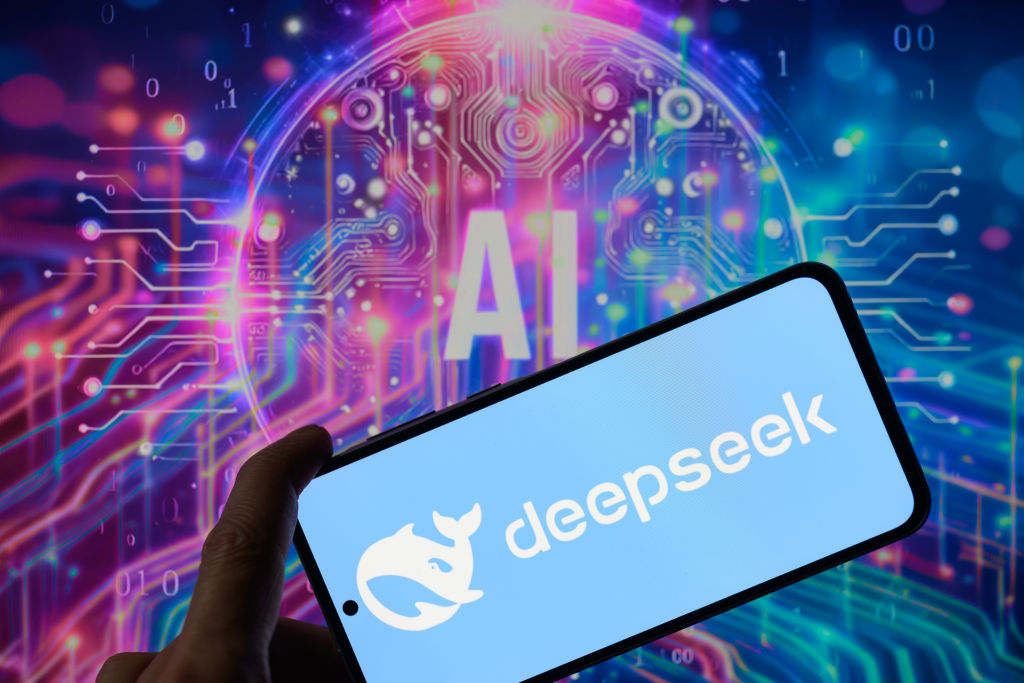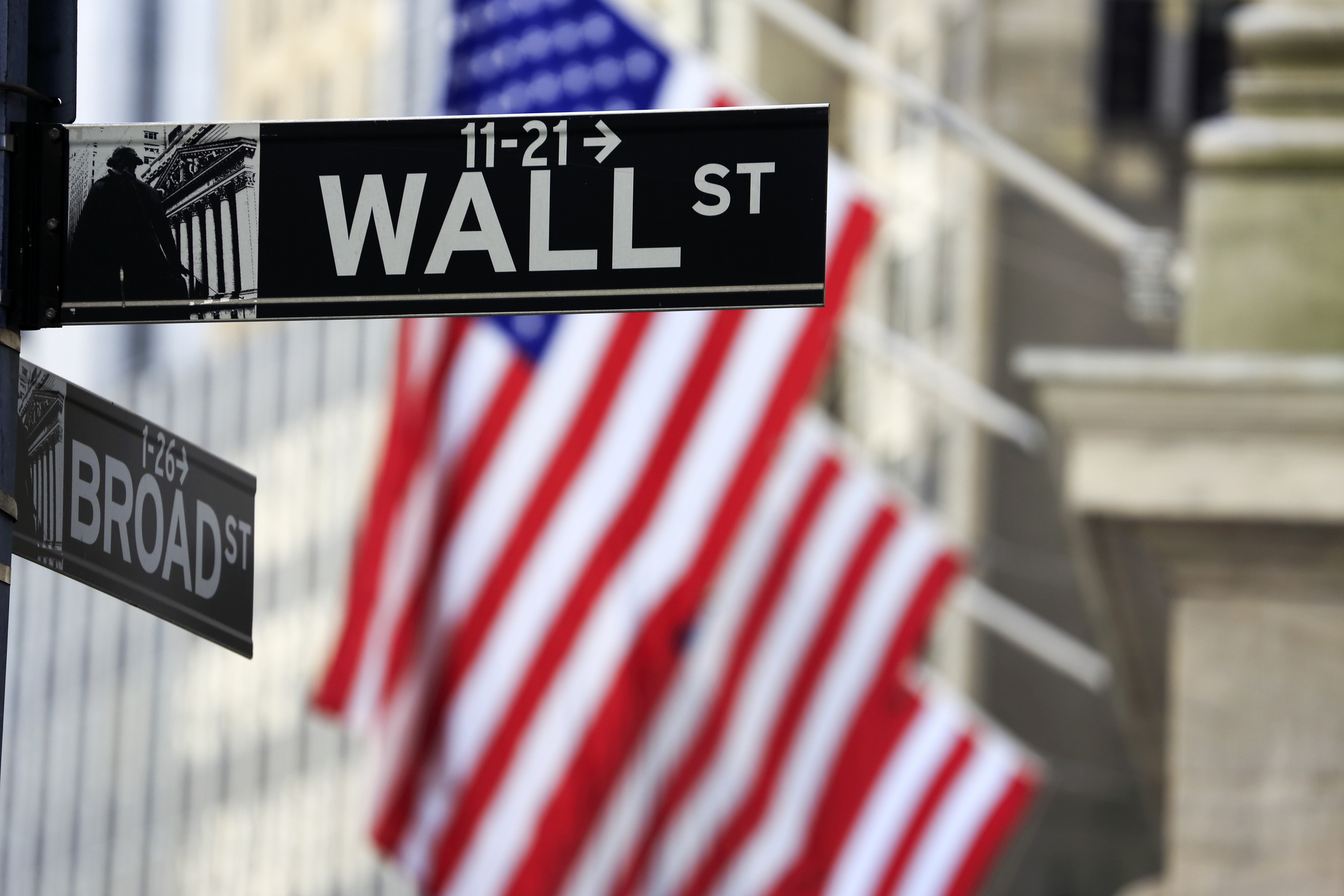The DeepSeek Crash: What It Means for AI Investors
DeepSeek's R1 model represents both risk and opportunity. Here's what DeepSeek means for AI investors.


Training a foundation model like those advanced artificial intelligence systems from OpenAI and Anthropic requires enormous amounts of data, the use of expensive GPUs and sophisticated fine tuning.
It's a process that can take months and hundreds of millions of dollars – or so it was thought until a tech startup from China upended this conventional approach.
In late January, DeepSeek claimed that it built its own foundation model for less than $6 million. The response from investors to this news was brutal and swift.

Sign up for Kiplinger’s Free E-Newsletters
Profit and prosper with the best of expert advice on investing, taxes, retirement, personal finance and more - straight to your e-mail.
Profit and prosper with the best of expert advice - straight to your e-mail.
The price of Nvidia (NVDA) stock plunged 17% on January 27, wiping out $590 billion in value. It was the largest drop in market capitalization for a company in a single day. Many other semiconductor and AI companies sold off amid a $1 trillion evaporation of wealth.
This may be an overreaction. AI stocks have been on a major bull run for the past couple of years, and valuations certainly have reached lofty levels.
But there are real signs the AI market is undergoing fundamental changes. Here's what DeepSeek means for AI investors.
What is DeepSeek?
The founder of DeepSeek, 40-year-old Liang Wenfeng, is a billionaire who made his wealth as a hedge fund manager. A key part of his approach has been to leverage AI for his investment strategies.
A few years ago, Wenfeng started buying up thousands of GPUs from Nvidia. He did this ahead of impending import restrictions on this technology from the U.S.
It's not clear if Wenfeng was able to obtain more high-powered GPUs. If not, his AI team was able to use innovative techniques to more efficiently train their models.
One of these is "distillation," which involves using larger modes to improve the performance of smaller models. Another approach is "mixture of experts," or training different parts of a model for specific tasks.
DeepSeek's latest foundation model is called R1, which is open source. This means the code and weights for the model are freely available (although the underlying training data has not been disclosed).
Based on a variety of tests, the R1 model has been shown to be on par or even better than other models from OpenAI, Anthropic, and Facebook and Instagram parent Meta Platforms (META).
As Andreessen Horowitz cofounder Marc Andreessen said in a tweet shortly after the results of its test were made public, "Deepseek R1 is one of the most amazing and impressive breakthroughs I’ve ever seen — and as open source, a profound gift to the world."
The immediate impact of DeepSeek
It's still early days for the R1 model. In the coming weeks, more details on its performance will emerge. It helps that the model is open source, which makes it easier for outsiders to conduct independent analysis.
There are big questions about the true costs of the system as well as how the model was trained. It may be that DeepSeek made extensive use of OpenAI for the process.
"It isn't clear yet if DeepSeek is the real deal or a DeepFake, but regardless of what we learn in the coming days, it's clear that this is a wake up call," said Dr. Robert Blumofe, the chief technology officer of Akamai Technologies (AKAM).
According to Blumofe, "The path of bigger and bigger large language models that rely on ever-increasing GPUs and massive amounts of energy is not the only path forward."
Even before the launch of R1, there were signs of commoditization for foundation models. The market has been intensely competitive, and pricing has been falling significantly.
This is not good news for those companies that rely mostly on these systems like OpenAI and Anthropic, which command substantial valuations.
In fact, economics of the recently announced $500 billion Stargate project involving Oracle (ORCL), OpenAI, SoftBank and technology investment firm MGX already look dicey.
Nvidia could also face additional pressure and not just from upstarts like DeepSeek.
Nvidia's biggest customers – including Amazon.com (AMZN), Microsoft (MSFT), Google parent Alphabet (GOOGL) and Meta – are building their own chipsets.
The potential upside of DeepSeek
If DeepSeek's innovations prove to be real, there should be considerable benefits as well.
"The new-found AI competition could lead to breakthroughs in the compute resources needed to power AI workloads," said Lisa Martin, a research director at The Futurum Group.
Lower costs will help to make powerful AI technologies more pervasive, making it easier, for example, for software developers like ServiceNow (NOW) and Salesforce (CMS) to build their applications.
"The focus is shifting from innovation in the model itself to how effectively it can be deployed," said Qlik CEO Mike Capone.
Capone says the real winners of the AI race will be "companies that understand this pivot."
"The future isn't about chasing the next slightly better model," he explains. "It's about building the infrastructure to operationalize AI, leveraging proprietary data, and ensuring outputs reach the people who can act on them."
Related content
- Four Ways to Invest in Quantum Computing
- The Best Lithium Stocks to Buy Now
- Hot Upcoming IPOs to Watch
Get Kiplinger Today newsletter — free
Profit and prosper with the best of Kiplinger's advice on investing, taxes, retirement, personal finance and much more. Delivered daily. Enter your email in the box and click Sign Me Up.

Tom Taulli has been developing software since the 1980s when he was in high school. He sold his applications to a variety of publications. In college, he started his first company, which focused on the development of e-learning systems. He would go on to create other companies as well, including Hypermart.net that was sold to InfoSpace in 1996. Along the way, Tom has written columns for online publications such as Bloomberg, Forbes, Barron's and Kiplinger. He has also written a variety of books, including Artificial Intelligence Basics: A Non-Technical Introduction. He can be reached on Twitter at @ttaulli.
-
 What Wall Street's CEOs Are Saying About Trump's Tariffs
What Wall Street's CEOs Are Saying About Trump's TariffsWe're in the thick of earnings season and corporate America has plenty to say about the Trump administration's trade policy.
By Karee Venema
-
 The Role of the U.S. Dollar in Retirement: Is It Secure?
The Role of the U.S. Dollar in Retirement: Is It Secure?Protect your retirement from de-dollarization, because “capital always goes where it is treated best."
By Adam Shell
-
 What Wall Street's CEOs Are Saying About Trump's Tariffs
What Wall Street's CEOs Are Saying About Trump's TariffsWe're in the thick of earnings season and corporate America has plenty to say about the Trump administration's trade policy.
By Karee Venema
-
 To Stay on Track for Retirement, Consider Doing This
To Stay on Track for Retirement, Consider Doing ThisWriting down your retirement and income plan in an investment policy statement can help you resist letting a bear market upend your retirement.
By Matt Green, Investment Adviser Representative
-
 How to Make Changing Interest Rates Work for Your Retirement
How to Make Changing Interest Rates Work for Your RetirementHigher (or lower) rates can be painful in some ways and helpful in others. The key is being prepared to take advantage of the situation.
By Phil Cooper
-
 When to Sell Your Stock
When to Sell Your StockKnowing when to sell a stock is a major decision investors must make. While there's no one correct answer, we look at some best practices here.
By Charles Lewis Sizemore, CFA
-
 Within Five Years of Retirement? Five Things to Do Now
Within Five Years of Retirement? Five Things to Do NowIf you're retiring in the next five years, your to-do list should contain some financial planning and, according to current retirees, a few life goals, too.
By Evan T. Beach, CFP®, AWMA®
-
 The Home Stretch: Seven Essential Steps for Pre-Retirees
The Home Stretch: Seven Essential Steps for Pre-RetireesThe decade before retirement is the home stretch in the race to quit work — but there are crucial financial decisions to make before you reach the finish line.
By Mike Dullaghan, AIF®
-
 Stock Market Today: Great Power Affairs Mesmerize Markets
Stock Market Today: Great Power Affairs Mesmerize MarketsThe U.S. and China are at least talking about talking about tariffs, and investors, traders and speculators are showing a little less fear.
By David Dittman
-
 Three Options for Retirees With Concentrated Stock Positions
Three Options for Retirees With Concentrated Stock PositionsIf a significant chunk of your portfolio is tied up in a single stock, you'll need to make sure it won't disrupt your retirement and legacy goals. Here's how.
By Evan T. Beach, CFP®, AWMA®